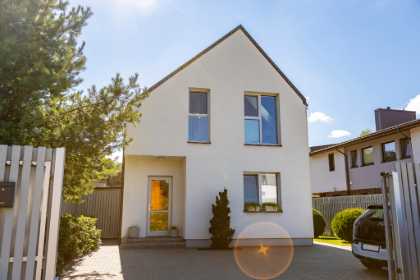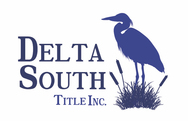
Your Best Decision is
in Our Hands!
Blog
07/08/2025
When you’re ready to buy a home, one of the first big decisions you’ll face is whether to purchase a new or existing home. To help you decide, this post by Delta South Title, Inc. in Mobile, AL will give you an overview of what it can cost you over 10 years.

Buying a new or existing home? On the surface, the choice can feel like a matter of style or personal taste. But behind the aesthetics lies a more important consideration: the total cost of ownership over time. Here, we’ve broken down what each option may actually cost you over the course of 10 years to help you decide.
Call Delta South Title, Inc. in Mobile, AL, at (251) 633-3133 if you’re to take the next step in your real estate journey.
Should You Buy a New or Existing Home?
1. Purchase Price and Upfront Costs
New Build:
New homes typically come with a higher price tag. Depending on the market, you may pay 10 to 20 percent more than you would for a similar-sized existing home. A big part of that is the value of brand-new materials, up-to-date building codes, and the appeal of being the first person to live in the home. Many buyers are also tempted by customization options, but those upgrades—like granite countertops, luxury flooring, or high-end appliances—can quickly add $10,000 to $50,000 or more to the final cost.
Existing Home:
Older homes are often more affordable upfront, especially if they require cosmetic updates or repairs. If you’re willing to put in some work, you can often find better deals. However, that lower price might come with immediate expenses—such as replacing old windows, updating a worn-out HVAC system, or repairing a roof that’s near the end of its lifespan.
Over 10 years, the difference in upfront and early-stage costs can be substantial. While a new build might cost $30,000 to $50,000 more initially, some of that gap could be offset by savings in other areas.
2. Maintenance and Repair Costs
New Build:
One of the biggest advantages of new construction is that it requires less maintenance early on. With everything from plumbing and electrical systems to the roof and HVAC brand-new and covered by warranties, you’re unlikely to face major repair costs during the first five to ten years of ownership.
Existing Home:
Older homes usually come with some deferred maintenance. Over the course of a decade, you may need to replace appliances, upgrade insulation, or fix structural issues. Even well-maintained homes experience wear and tear, especially if they’re 20, 30, or more years old.
Estimated cost over 10 years:
- New build: $5,000 to $10,000
- Existing home: $15,000 to $30,000 or more
3. Energy Efficiency and Utility Costs
New Build:
Modern homes are built to higher energy standards. They typically include efficient insulation, dual-pane windows, ENERGY STAR appliances, and smart HVAC systems. These features can translate to significant monthly savings on heating, cooling, and water usage.
Existing Home:
Unless it has been updated, an older home may have drafty windows, aging water heaters, or poor insulation. That means higher utility bills and possibly more frequent system breakdowns.
Over 10 years, a more efficient home could save you between $6,000 and $18,000 in energy costs, depending on your climate, energy usage, and the condition of the existing home.
Call Delta South Title, Inc. in Mobile, AL, at (251) 633-3133 for the assistance and title services your case needs.
4. Property Taxes and Insurance
New Build:
New homes are usually assessed at a higher value, which means you may pay more in annual property taxes. Insurance premiums may also be higher initially, reflecting the full replacement cost of the brand-new structure.
Existing Home:
If the home hasn’t been reassessed in a while or is valued lower, property taxes could be significantly less. Insurance may also cost less, though older homes sometimes require add-ons or special coverage depending on condition or location.
This difference can range from $1,000 to $2,000 per year—or up to $20,000 over a decade.
5. Resale Value and Market Positioning
New Build:
Brand-new homes may not appreciate as quickly in their first few years, especially in neighborhoods where new construction continues to pop up. If the development isn’t yet fully built, resale competition may be steep.
Existing Home:
Older homes, especially those in established neighborhoods, often benefit from limited housing supply and mature surroundings—like larger lots, tree-lined streets, or better school zones. These factors can enhance resale appeal and price stability.
While appreciation varies by market, existing homes may offer a stronger return on investment if location is prioritized.
Call Delta South Title, Inc. in Mobile, AL, at (251) 633-3133 for the help you need through your real estate ventures.
COPYRIGHT © 2024 Delta South Title, Inc.
ALL RIGHTS RESERVED

